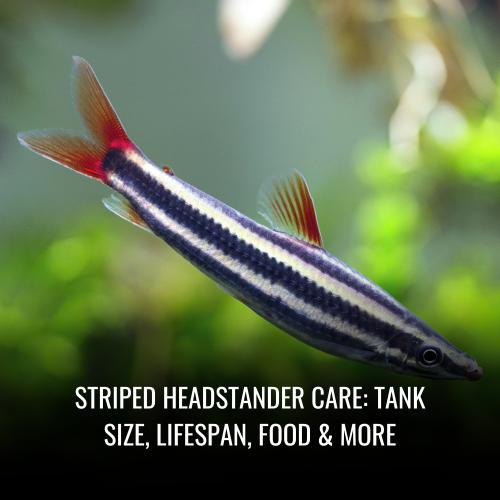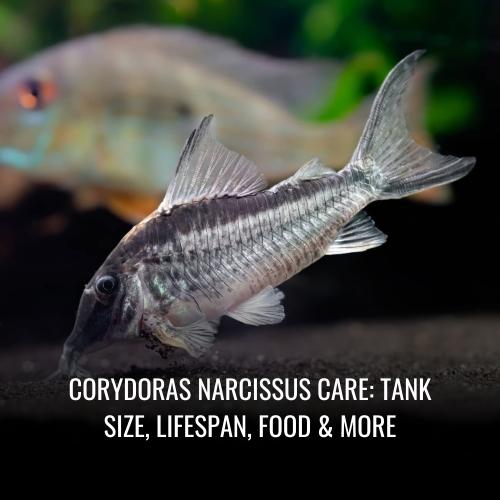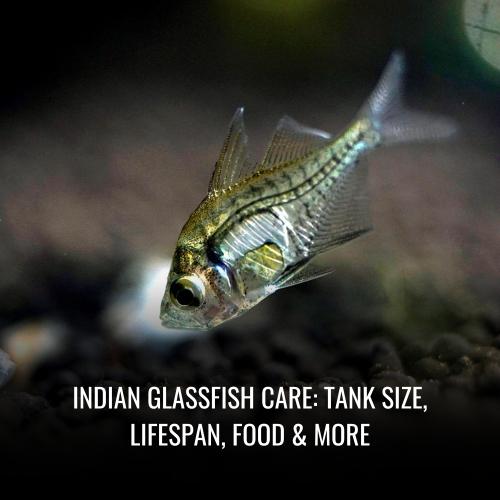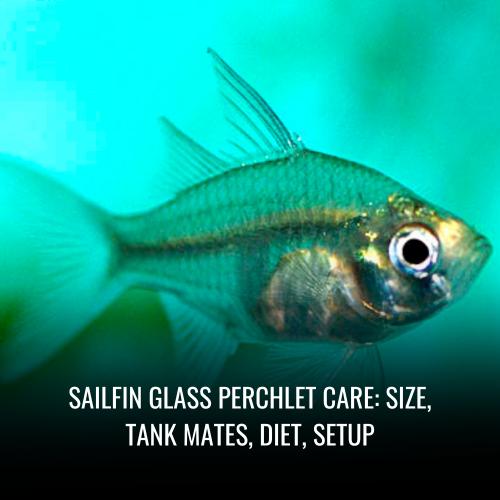Zebra blenny Care: Diseases, Tank Setup, Food & More
This post contains affiliate links. As an Amazon Associate, we earn from qualifying purchases.
The Zebra Blenny, an intriguing species of blenniid fish, thrives in the shallow and calm tidepools of Hawaii’s coastal waters. This small but fascinating marine creature has a unique survival mechanism with a nuchal crest on its head that adds to its distinctive appearance. In tanks, they grow to a modest size and display territorial aggression, especially towards other similar-looking fish. They are predominantly algae eaters, however, in the confinement of an aquarium, they often adapt to consume a variety of food items.
| Scientific Name | Zebra Blenny |
|---|---|
| Common Name | Zebra Blenny |
| Family | Blenniidae |
| Usual Size in Tanks | 4 inches |
| Recommended pH Range | 8.1 – 8.4 |
| Recommended Hardness | 8 – 12 dGH |
| Recommended Temperature | 72 – 78°F |
| Reproduction | Egg layers |
| Origin | Western Pacific |
| Temperament (Own Species) | Aggressive |
| Temperament (Other Species) | Peaceful |
| Usual Place in Tank | Bottom |
| Lifespan | 2-4 years |
| Tank Size Requirement | 20 gallons |
| Filtration System | Strong, with good water movement |
| Sexual Dimorphism | Males may be larger |
| Substrate Cleaning | May sift through sand for food |
Zebra Blennies are an excellent choice for seasoned aquarists looking to add some character to their brackish or marine reef aquariums. They require a decent-sized tank with plenty of hiding spots and well-maintained water quality to emulate their natural tidepool habitat.
Scientific Name
The system of binomial nomenclature is the gold standard for classifying living organisms, setting forth a universal method to name species. This system entails a two-part naming process, where the first term pinpoints the genus and the second identifies the species. The Zebra Blenny, an eye-catching dweller of reef ecosystems, is designated with the scientific name Omobranchus zebra. This method of naming not only adds precision but also overcomes the barriers posed by regional language differences.
Why Scientific Naming Matters:
- Ensures clarity and consistency across various languages and regions.
- Facilitates accurate communication among researchers and enthusiasts.
- Helps avoid confusion that arises from the plethora of common names.
By adhering to binomial nomenclature, the marine biology community can efficiently share knowledge and insights about the fascinating Zebra Blenny, regardless of local common names or colloquial terms.
Average Size
Within the protective bounds of aquarium life, zebra blennies (Omobranchus zebra) often measure between 5 to 6 cm (1.97 – 2.36 inches). However, these agile fish exhibit sexual dimorphism in size, with males reaching up to 15 cm in standard length (SL), and females slightly smaller, maxing out at around 14.1 cm SL. Notably, after surpassing the 6 cm mark, adult zebra blennies display a darker hue and fewer distinct markings, a sophisticated marine couture that aligns with the creature’s evolution for survival in challenging environments.
Quick Facts:
| Attribute | Fact |
|---|---|
| Adult Size Range | 5-6 cm (in captivity) |
| Max Male Size (SL) | 15 cm |
| Max Female Size (SL) | 14.1 cm |
| Coloration | Dark with few markings (adults over 6 cm) |
Zebra blennies excel in leaping; their impressive agility makes them remarkable tidepool athletes. As facultative air-breathers, they are well-adapted to the variable conditions of rocky shores, withstanding significant shifts in salinity, temperature, oxygen, and pH levels. Their resilience is reflected in their capacity to grow beyond their average size in domestic aquariums, revealing the species’ robust adaptation to both natural and artificial habitats.
Lifespan
Zebra blennies have a projected lifespan range of 3 to 5 years, which ties closely with the level of care provided. In aquarium settings, they rarely exceed the five-year mark. Their longevity can be linked to various environmental and care factors, such as:
- Water quality
- Diet
- Compatibility with tank mates
To ensure a robust and healthy life for Zebra blennies, it is crucial to replicate their natural brackish water habitats and provide a diet rich in the food items they would typically consume. The table below highlights key factors contributing to their lifespan:
| Factor | Influence on Lifespan |
|---|---|
| Water Quality | Essential for overall health |
| Diet | Varied diet supports growth and vitality |
| Tank Mates | Peaceful companions prevent stress-related issues |
In the wild, the lifespan of Zebra blennies may vary due to the presence of predators and the quality of their coastal water habitats. Therefore, a carefully maintained aquarium can be pivotal in achieving the full lifespan potential of these cool, agile marine creatures.
Natural Habitat
The Zebra Blenny boasts a unique adaptability to its surroundings, with different species establishing homes in diverse coastal ecological niches. In Hawaii, these blenniid fishes find tranquility in the sun-warmed pools that form above the tide’s reach. Here, they exhibit an uncommon swimming technique, gliding through the water with adept sideways movements, pectoral fins laid closely against their bodies.
See the table below for a comparative overview of the habitats of Hawaiian and Indian Zebra Blennies:
| Region | Preferred Habitat | Water Type | Behavior |
|---|---|---|---|
| Hawaii | Tidepools above high tide line | Maritime pools | Sunbathing, organic debris feeding |
| India/Bangladesh | Estuaries, Mangrove Swamps | Fresh, Brackish | Adaptable to salinity variances |
With survival mechanisms attuned to their environment, these intertidal fishes contribute to the complex and vibrant ecosystems of their native coastal waters.
Appearance
The Zebra Blenny, known scientifically as Iblennius zebra, boasts a vivid and variable color palette, enhancing its presence in the shallow coastal waters where it dwells. Typically, their hues range from sleek blue-black to muted charcoal or a brownish gray, accentuated by pronounced, unambiguous stripes. When navigating their shallow habitats or during moments of alarm, these fish can exhibit a speckled pattern that adds to their visual intrigue.
Regarding size, males reach an impressive maximum length of 6.5 cm, making them a cool and curious addition to any reef aquarium or tide pool assemblage they inhabit.
| Characteristic | Description |
|---|---|
| Color Variations | Blue-black, Charcoal, Brownish gray, with clear stripes |
| Speckling | Apparent in shallow water or when startled |
| Distinguishing Marks | Bright blue dots beneath eyes |
| Crest & Tentacles | Distinct crest and two head tentacles, longer in males |
| Maximum Size (Males) | 6.5 cm in length |
Behavior & Temperament
Zebra Blennies, characterized by their territorial and assertive nature, are known to exhibit strong aggression, particularly towards fish resembling their own appearance. This intrinsic behavior manifests not only against their own kind but extends to other species within their aquatic ecosystem. While they make stunning visual additions to reef aquariums, their demeanour towards tankmates can be challenging.
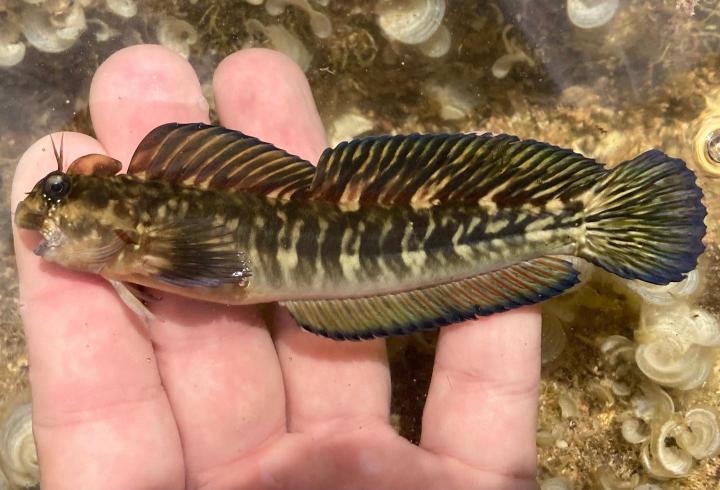
Are Zebra Blennies Fin Nippers?
Reports show that Zebra Blennies possess a sheer tendency to be fin nippers, particularly aggressive towards fish that parallel their look and size. This behavior may result in the nipping of fins of other fish within their vicinity, emphasizing the need for thoughtful consideration when populating a community tank that includes these blenniid fishes.
Are Zebra Blennies Aggressive To Each Other & Other Fish?
The robust personality of Zebra Blennies shines through their interactions with both conspecifics and other fish species. Within confined spaces, such as smaller tanks, a dominant Zebra Blenny may go as far as to eliminate competitors, including other blennies and similar-looking fish such as gobies. This aggressive conduct can lead to a tense environment and should be diligently monitored to maintain the well-being of all aquatic inhabitants.
Are Zebra Blennies Friendly To Each Other & Other Fish?
The term “friendly” is difficult to ascribe to Zebra Blennies. Given their aggressive tendencies, it’s more appropriate to consider them as tolerating other fish that do not compete for their territory or resources. They are less likely to harass mid to top-level swimmers, but caution should be exercised when introducing new tankmates, especially those that resemble their own kind or share bottom-dwelling habits.
Are Zebra Blennies Schooling Fish?
Zebra Blennies are decidedly non-schooling fish. Their solitary and territorial inclinations mean that they prefer to occupy and defend their own space, rather than coexisting in groups. An owner should consider these behavioral traits when deciding on the blenny’s habitat, ensuring enough room for each fish to establish its domain within the tank landscape.
Can You Have Just One Zebra Blenny In The Tank?
Given their pugnacious nature, it is advisable to house only one Zebra Blenny in an aquarium to avoid intra-species conflicts and ensure a more harmonious tank environment. This approach reduces stress on the singular Zebra Blenny and prevents aggressive episodes towards other potential blenny competitors, maintaining a more peaceful setting for all dwellers.
Do Zebra Blennies Need To Be In Groups?
Contrary to schooling species, Zebra Blennies do not necessitate group dynamics for their well-being. Instead, they thrive as individual entities within their territory. If one does wish to keep multiple Zebra Blennies, a larger tank is indispensable with clearly demarcated territories—each equipped with a cave or similar structure—to provide refuge and a sense of security for each blenny.
Food & Diet
Zebra blennies, known for their striking stripes and aggressive nature, are not fussy eaters and demonstrate a versatile diet that consists of a variety of live or frozen foods. Their natural feeding habits are strongly influenced by their brackish and coastal water habitats, where they actively sift through the substrate to find their next meal.
These fish are omnivorous and have been shown to thrive on a diet rich in small crustaceans, algae, and detritus, providing them with the essential nutrients required for their survival and health. In captivity, a diet of bloodworms, microworms, brine shrimp, copepods, and rotifers is beneficial for maintaining their vibrancy and aggressive demeanor.
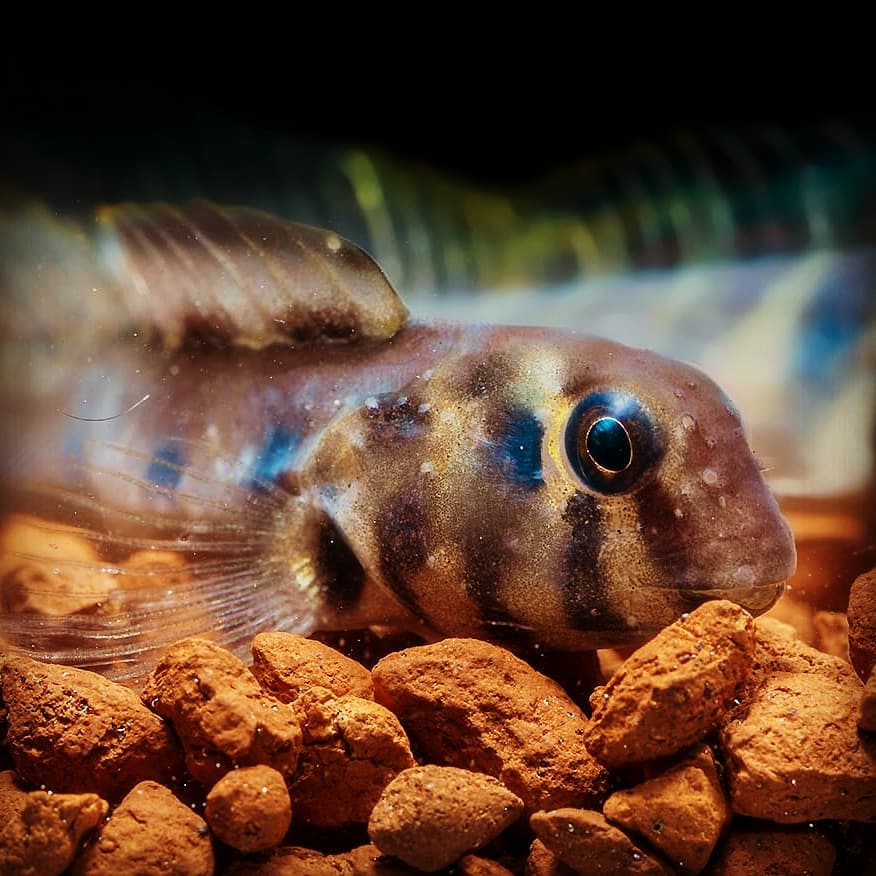
Do Zebra Blennies Eat Algae?
While the diet of Zebra blennies predominantly includes animal-based foods, they are known to graze on algae that grow on hard substrates and rock surfaces. Their consumption of algae plays a role in controlling the algal population, contributing to the ecological balance within their tide pool and reef habitats.
However, algae are not the main component of their diet and should only be considered as a supplemental food source for these opportunistic feeders. For aquarium enthusiasts, ensuring a well-rounded diet for Zebra blennies will support their overall well-being.
Do Zebra Blennies Eat Shrimp?
Zebra blennies have a broad palate and will indeed eat small shrimp, particularly in their larval stages. Their natural hunting skills allow them to seek out and capture various types of small benthic invertebrates, which effectively include brine shrimp, Mysis shrimp, and potentially other small shrimp species found in their environment. As part of their dietary intake, live or frozen shrimp can serve as a nutritious food source, rich in protein and essential fatty acids.
Do Zebra Blennies Eat Bloodworms?
Bloodworms make an excellent dietary supplement for Zebra blennies. These bottom-dwelling fish are accustomed to feeding on bloodworms in their natural mangrove swamp habitats, where such organisms are readily available. Aquarists can provide bloodworms, both live and frozen, as part of the Zebra blennies’ regular diet, which helps emulate their natural feeding patterns and ensures a varied and nutritious intake.
Do Zebra Blennies Eat Mosquito Larvae?
Zebra blennies are likely to consume mosquito larvae, should they come across them in their environment. While not a staple in their diet, Zebra blennies’ scavenging behavior dictates that they would feed on any suitable prey within their reach, which includes mosquito larvae present in standing water sources of their estuarine and mangrove habitats. Introducing mosquito larvae as a food item in the home aquarium might provide a rich source of protein and add diversity to their diet.
Do Zebra Blennies Eat Planaria?
There is the possibility of Zebra blennies eating planaria, small flatworms commonly found in aquariums. Given their aggressive and predatory nature, these blennies might prey upon planaria when foraging through the substrate.
However, aquarists must monitor such conditions, as an overabundance of planaria can indicate other water quality issues.
Do Zebra Blennies Eat Plants?
Despite their omnivorous classification, Zebra blennies do not display an inclination toward plant consumption. They are primarily hunters of small crustaceans and consumers of protein-rich diets, which match their needs in their natural habitats and in captivity. Aquarists should focus on ensuring that their food items consist of animal-based nutrients rather than plant matter to adequately satisfy their dietary requirements.
Sexing: Male vs Female
Identifying the gender of Zebra blennies poses a unique challenge due to the absence of visible differences between males and females. Their physical characteristics offer no cues to distinguish one sex from the other. This lack of sexual dimorphism means that both sexes appear nearly identical to the human eye, complicating efforts to breed them in captive conditions.
In captivity, distinguishing males from females is crucial for creating breeding pairs, but without distinct morphological differences, this process becomes a matter of educated guesswork. To ascertain the sex of Zebra blennies, observers must rely on subtle behavioral cues rather than physical traits. While this approach allows for some insight, it is not always reliable and may lead to inaccuracies when attempting to pair individuals for breeding.
The difficulty in sexing these marine creatures also affects the ability to study their reproductive and mating behaviors systematically, making it challenging for both researchers and aquarium enthusiasts to gain a deeper understanding of their life cycle.
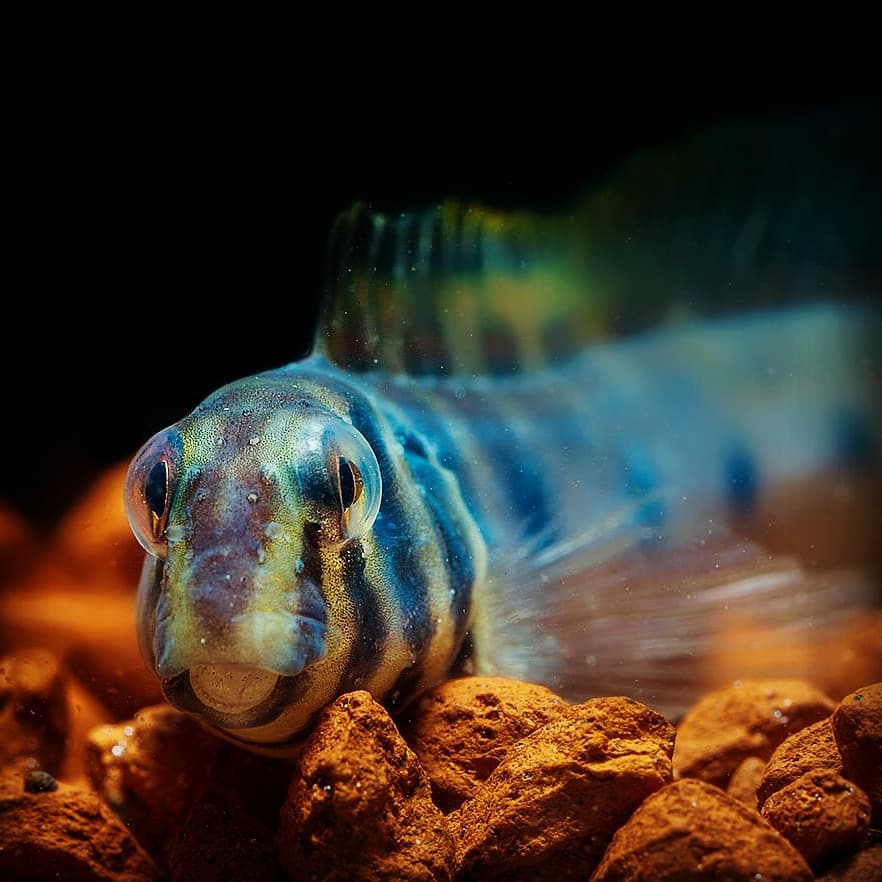
Zebra blenny Tank Mates
When selecting tank mates for Zebra blennies, careful consideration is crucial due to the blenny’s aggressive and territorial nature. These fish are best housed with others that prefer the mid to upper levels of the aquarium, thereby reducing the likelihood of territorial disputes.
Suitable Tank Mates for Zebra Blennies:
- Mid-water Schooling Fish: Such as chromis or cardinalfish.
- Upper-level Swimmers: Including peaceful wrasses and hawkfish.
To prevent conflict, it is advisable to host only one Zebra blenny per tank. In cases where a larger tank can be provided, ensure there are multiple caves or hideouts to cater to each blenny’s need for its territory. Keep in mind Zebra blennies may exhibit predatory behavior toward fish that resemble them, such as gobies; hence, such similar-looking species should be avoided.
Key Considerations for Tank Companions:
- Compatibility: Tank mates must be compatible with the Zebra blenny’s aggressive demeanor.
- Hiding Spots: Sufficient hiding places can help manage territoriality.
- Tank Conditions: High water turnover and stable temperature are vital to supporting a healthy environment for all inhabitants.
In summary, when introducing tank mates for Zebra blennies, prioritize species that can naturally coexist without inciting the blenny’s territorial aggression and ensure the tank conditions cater to all the fish’s needs.
Aquarium Setup
Creating an optimal environment for Zebra Blennies is essential to their well-being and showcases their unique behaviors. A Zebra Blenny’s aquarium should be tailored to match their natural habitat closely, providing ample space for foraging and hiding.
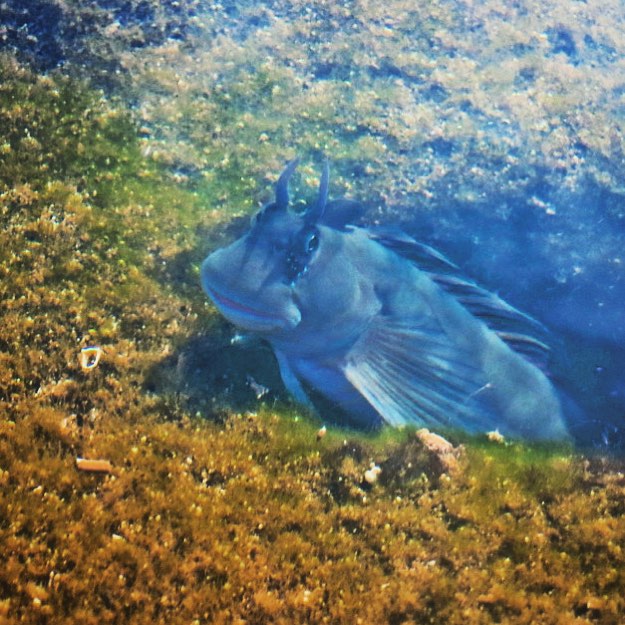
Ideal Tank Size
Zebra Blennies, also known as Striped Cateye or Indian Zebra Blennies, thrive in aquariums that reflect their need for space and the complexity of their native tide pools. The following is a breakdown of recommended tank sizes for the Zebra Blenny:
- Standard Setup: A minimum of 30 gallons to provide enough room for live rock arrangements for hiding and hunting.
- Brackish Setup: At least 20 gallons when simulating brackish water conditions.
- Reef or Fish-Only Aquarium: A minimum of 75 gallons to ensure sufficient space alongside other marine inhabitants.
- Special Aquarium Needs: Recommended to have at least 150 liters (40 gallons) to cater to their unique requirements.
Ideal Water Parameters
When replicating the natural conditions of Zebra Blennies, the following water parameters should be maintained:
- Temperature: A stable range between 72-82°F (22-28°C) is ideal.
- pH: Maintain a pH level of 7.0 – 8.5 to keep your Zebra Blennies healthy.
- Salinity: For brackish water setups, a specific gravity of 1.020 – 1.026 is recommended. Salinity should be set at 1.005 for brackish conditions.
- Ammonia and Nitrites: Both should always be at 0ppm to prevent toxicity.
- Nitrates: Keep levels below 30ppm for the health of the fish.
Creating a consistent and stable environment using proper substrates like sand, alongside pieces of bogwood or rock formations, will mimic the conditions Zebra Blennies need for sifting and hiding.
Filtration
Filtration is crucial in maintaining a clean and healthy habitat for Zebra Blennies. Aquarium filtration systems should include mediums appropriate for trapping solids while allowing water to circulate effectively:
- Mechanical Filtration: Removes visible waste and particulates.
- Chemical Filtration: Utilizes activated carbon or similar materials to remove toxins and odors.
- Biological Filtration: Contains live bacteria that process ammonia and nitrites.
An efficient filtration system supports clear water and reduces harmful substances, ensuring a thriving environment for the Zebra Blenny.
Lighting
When considering lighting for a Zebra Blenny’s aquarium, the focus should be on more than just wattage:
- Intensity: Aim for approximately 5000 Lux, suitable for a freshwater tank, to support the visibility and well-being of the Zebra Blenny.
- Spectrum: Ensure the spectrum of light supports the health of the fish and any live plants within the tank.
- Efficiency: Modern LED lighting can provide high-quality illumination with energy efficiency.
While creating a welcoming home for a Zebra Blenny, always take into account the tank size, water parameters, filtration, and lighting. All factors contribute to a balanced ecosystem where the Zebra Blenny can thrive.
Common Possible Diseases & Prevention
Zebra Blennies, like all aquatic pets, are subject to various health issues. Not only are they stunning, with conspicuous stripes adorning their bodies, they are also prone to several common fish diseases. Notable ones include:
- Ich (White Spot Disease): Often recognized by white, grain-like spots.
- Fin Rot: Indicated by frayed or decaying fins.
- Parasitic Infections: Manifest through irritations or unusual swimming patterns.
Being proactive is key to disease prevention for these fascinating blenniids. Here are concise steps to help keep your Zebra Blennies in good health:
- Maintain Water Quality: Ensure clean, stable water by monitoring parameters regularly.
- Quarantine New Arrivals: Any new fish should be isolated for a period before joining the main tank to forestall the spread of diseases.
- Monitor Behavior and Appetite: Pay attention to any changes – early detection can lead to more effective treatment.
- Diet Diversity: Supply a variety of high-quality food items to strengthen their immune system.
With these measures, your Zebra Blenny can enjoy a healthier and happier life in its aquatic home.
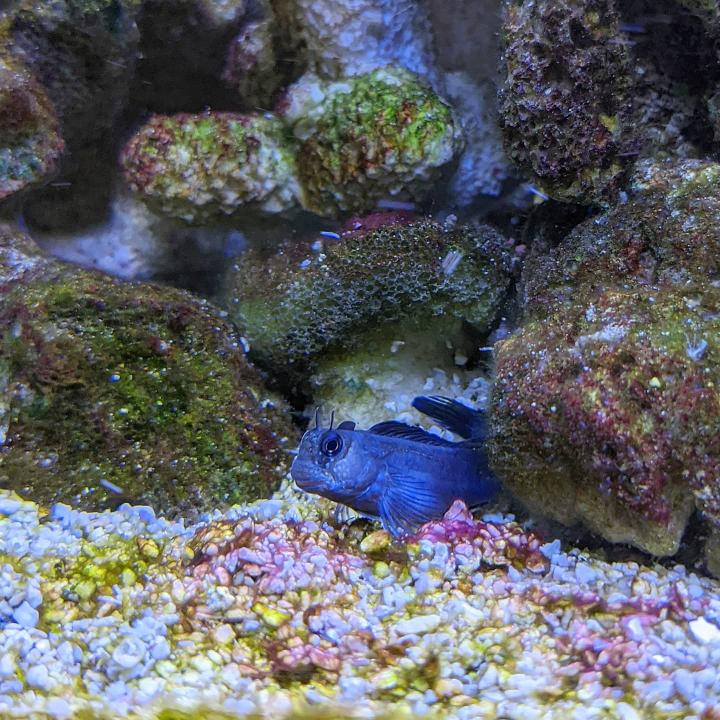
Breeding Zebra Blenny in Aquarium
Breeding Zebra Blennies (Omobranchus zebra) in captive environments presents a unique challenge for aquarists. As it stands, there have been no successful reports of aquarium breeding for this species. Their inherently small size, coupled with a penchant for aggression and territoriality, could be factors influencing their breeding difficulty.
Since the Zebra Blenny is a relatively recent addition to the aquarium hobby, detailed knowledge on their reproductive habits is scant. To potentially coax them into breeding, it’s essential to create an environment that mimics their natural conditions.
Key Considerations for Breeding Zebra Blennies:
- Environment: Well-structured with abundant caves and hiding spots.
- Behavior: Understanding their territorial nature is crucial.
- Research: A thorough grasp of their lifestyle, including their feeding habits and social interactions, is vital.
Aquarists aiming to breed Zebra Blennies should prepare for a deep dive into research, exploring both scientific studies and anecdotal evidence from seasoned hobbyists. A strategic approach, rooted in patience and derived from the natural ecology of these engaging marine creatures, may eventually pave the way for successful captive breeding.
Are Zebra blenny Easy To Keep?
Zebra blennies, with their distinctive stripes and active behavior, can add visual interest to any tank. However, they are not considered the easiest of fishes for novice aquarists due to their aggressive and territorial nature. Best suited for a species-only setup or larger tanks with ample hiding spots, zebra blennies may become dominant and intimidate other tank mates—especially those that are similar in appearance. Ensuring each fish has its own space to claim is key to cohabitation. Furthermore, they require a diet rich in live or frozen foods, which can be more demanding than a typical fish diet.
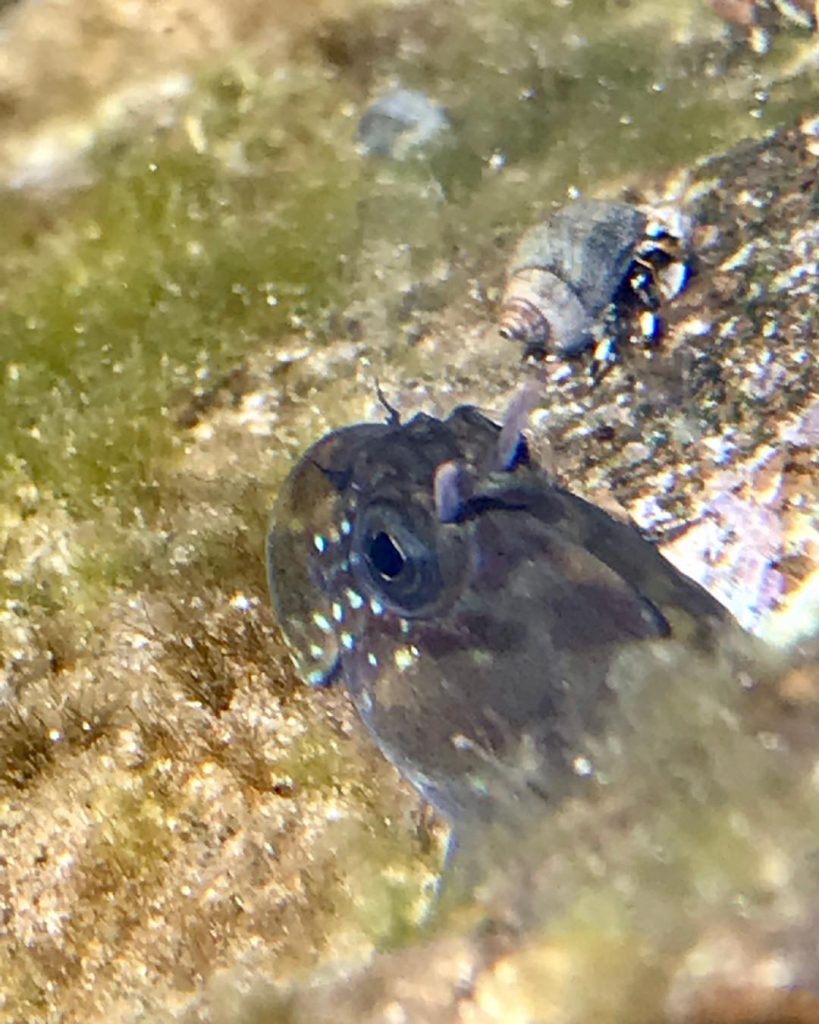
When considering zebra blennies for your aquarium, it’s important to note:
- They should be kept one per tank or in larger tanks with plenty of caves.
- The tank should have a high turnover to maintain oxygen levels.
- A cooler temperature is preferable to avoid low oxygen situations.
- A diet of live or frozen food is essential for their health.
Are Zebra blenny Sensitive To Water Changes?
Zebra blennies are noted for their adaptability to different water conditions, ranging from fresh to brackish and marine environments. This versatility is a testament to their resilience and shows that they can manage in intertidal zones with fluctuating salinity. Despite this adaptability, it’s crucial to maintain stable conditions within the aquarium to mimic their natural high tidepool habitat. While they may not be as sensitive to gradual changes in water parameters compared to other marine species, sudden shifts in water quality should be avoided to ensure their continued health and comfort.
Are Zebra blenny Sensitive To Ammonia?
Like many marine creatures, zebra blennies require clean, high-quality water for optimal health. Although their natural habitat in high tidepools may prepare them for various conditions, they do show sensitivity to high levels of ammonia. Their well-being must be maintained in an aquarium with efficient filtration and regular water testing. Ammonia spikes can lead to stress and health problems for the blennies, making diligent tank maintenance a top priority for their keepers.
Are Zebra blenny Sensitive To Copper?
While zebra blennies have demonstrated their robust nature by thriving in both fresh and brackish waters, there is limited information on their specific sensitivity to copper. Due to their evolutionary niche in the tranquil pools above the high tide line, it’s reasonable to infer that they could be vulnerable to contaminants typically harmful to marine life.
Copper is a common ingredient in many aquarium medications and treatments, but should be used cautiously with zebra blennies. Monitoring copper levels is crucial to prevent potential harm, as with any other contaminant exposure, to protect these unique and spirited tidepool inhabitants.



